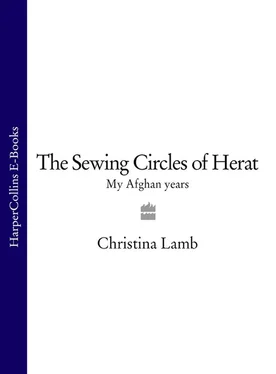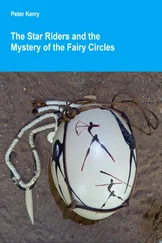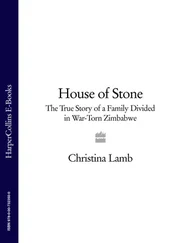1 ...7 8 9 11 12 13 ...18 Kandahar was where everything had started. Under the shimmering turquoise dome that dominates the sand-blown city lies the body of Ahmad Shah Abdali, the young Kandahari warrior who in 1747 became Afghanistan’s first king. The mausoleum is covered in deep blue and white tiles behind a small grove of trees, one of which is said to cure toothache, and is a place of pilgrimage. In front of it is a small mosque with a marble vault containing one of the holiest relics in the Islamic World, a kherqa , the Sacred Cloak of Prophet Mohammed that was given to Ahmad Shah by Murad Beg, the Emir of Bokhara. The Sacred Cloak is kept locked away, taken out only at times of great crisis 1 but the mausoleum is open and there is a constant line of men leaving their sandals at the door and shuffling through to marvel at the surprisingly long marble tomb and touch the glass case containing Ahmad Shah’s brass helmet. Before leaving they bend to kiss a length of pink velvet said to be from his robe. It bears the unmistakable scent of jasmine.
In a land of war, the tomb of Ahmad Shah is a peaceful place. Only the men with stumps for legs and burqa-clad war widows begging at its steps hint at the violence and treachery which has stalked Afghanistan since its birth as a nation-state, founded on treasure stolen from a murdered emperor. Part of that treasure was the famous Koh-i-Noor diamond, then said to be worth enough to maintain the whole world for a day and now among the Crown Jewels under twenty-four-hour guard in the Tower of London, stunningly beautiful but blighted by an ancient Hindu curse that the wearer will rule the world but if male will suffer a terrible misfortune.
A member of the war-like Pashtun tribe of Abdalis, Ahmad Shah was commander of the bodyguard of Nadir Shah, the great Persian conqueror who in 1738 had captured Kandahar from the Ghilzai, another Pashtun tribe and traditional rivals of the Abdalis. Nadir Shah moved east to take Jalalabad, Peshawar, Lahore and finally Delhi, where angered by locals throwing stones at him, he ordered a bloodbath in which 20,000 died. He left laden with treasures of the Moghuls including the fabled Peacock Throne of Emperor Shah Jahan, creator of the Taj Mahal, which was solid gold with a canopy held up by twelve emerald pillars, on top of which were two peacocks studded with diamonds, rubies and emeralds. Among the precious jewels he packed on his camels was the Koh-i-Noor, named after his exclamation on first seeing the 186-carat stone, describing it as ‘koh-i-noor!’ or ‘mountain of light’.
After India, Nadir Shah travelled west, conquering as he went, but with the Koh-i-Noor in his turban, he became more and more ruthless, convinced that everyone was trying to kill him, even his favourite son Raza Quli whom he had blinded. One night in 1747, travelling on yet another military campaign, someone stole into Nadir Shah’s tent and stabbed him to death. Ahmad Shah fled the camp with his 4000-strong cavalry and headed to Kandahar, taking much of the emperor’s treasury, including the cursed Koh-i-Noor.
Freed from Persian domination, the Abdalis held a jirga , a tribal assembly of elders and religious leaders to decide on a ruler. After nine days of discussion they settled upon the twenty-five-year-old Ahmad Shah, partly for his charisma, partly because he was a Saddozai, from the tribe’s most distinguished line, partly because a holy man stood up and said he should be, and largely because he had a large army and lots of treasure. A sheaf of wheat was placed on his head as a crown.
Ahmad Shah’s affectation of wearing a pearl earring from the looted Moghul treasures led his subjects to call him Durr-i-Durran, Pearl of Pearls, and the royal family became known as the Durrani clan. He set up a shura or tribal council to govern the country, and, quickly realising that the best way to control Pashtun tribes was to indulge their taste for warfare and plunder, he used Nadir Shah’s booty and a succession of military adventures to keep them in check. Helped by the fact that to the west Persia was in disarray after Nadir Shah’s death, and to the east the Moghul Empire was crumbling, Ahmad Shah ended up carving out the second greatest Muslim empire after the Ottoman Empire, taking Kabul, Peshawar, Attock, Lahore, and eventually Delhi.
Never the most modest of men, he had coins minted with the inscription, ‘the Commandment came down from the peerless Almighty to Ahmad the King: Strike coins of silver and gold from the back of fish to the moon’.
After his successes in India, Ahmad Shah moved west to capture Herat which was still under Persian rule, then north of the Hindu Kush to bring under his control the Hazara of Bamiyan, the Turkmen of Asterabad, the Uzbek of Balkh and Kunduz, and the Tajik of Khanabad and Badakshan to create Afghanistan as it is today. But he had to keep returning to India where his territories were threatened by the Hindu Maratha armies from the south. Invading India for a fourth time, he acquired Kashmir and Sindh.
Yet he always missed his homeland. A deeply religious man and warrior-poet, he wrote of Kandahar:
Whatever countries I conquer in the world I can never forget your beautiful gardens When I remember the summits of your beautiful mountains I forget the splendour of the Delhi throne.
Each time he left Kandahar there were plots to overthrow him, often by his own relatives and whenever he returned home from extending his empire, Ahmad Shah would spend the first few days executing dissidents. A later king, Abdur Rahman Khan, would refer to his country as Yaghistan or Land of the Unruly, and as the great Afghan scholar, the late Louis Dupree remarked, ‘no Pashtun likes to be ruled by another, particularly someone from another tribe, sub-tribe or section’.
In an attempt to deter the pretenders, the king started executing not only the plotters but also ten randomly chosen members of each sub-tribe involved, yet the intrigues continued. A sword wound on his nose turned ulcerous and cancer began eating away at his face, leaving him in terrible pain and according to accounts of the time, forced to wear a silver nose, with maggots from the wound dropping into his mouth whenever he ate or drank. The Sikhs raised an army and rebelled in the Punjab, forcing him to return to India a fifth, sixth, seventh and eighth time, twice destroying the Sikh city of Amritsar in his anger but never really succeeding in defeating them. Other parts of his empire broke away, some declaring independence, while Murad Beg, the Emir of Bokhara, took others.
Despairing of the land he had created, in 1772 he died alone and in agony in the Suleyman Mountains east of Kandahar, aged only fifty. He left thirty-six children including twenty-three sons most of whom thought they should be his successor. From then on the Durranis lost Punjab, Sindh, Kashmir and much of Baluchistan as two Durrani branches, the Barakzai and Saddozai – and family members within – tussled for control. With no outsiders to unite against until the first British invasion in 1839, soon everyone was fighting and blinding everyone else for power in each region, fathers against sons, brother against brother, uncle against nephew and one wearer of the Koh-i-Noor after another met a violent death. 2 They even had a name for it – badshahgardi , which means ruler-turning.
But in his heyday Ahmad Shah had ruled an empire stretching from the Amu Darya or Oxus River in the north to the Arabian Sea, from Mashad in the west to Delhi in the east, as well as Kashmir, Sindh and most of what is now Baluchistan. One way or another the Durrani dynasty he founded was to rule Afghanistan till the Communist takeover in 1978 and most Afghans regard him as the father of the nation, referring to him as Ahmad Shah Baba.
Читать дальше












